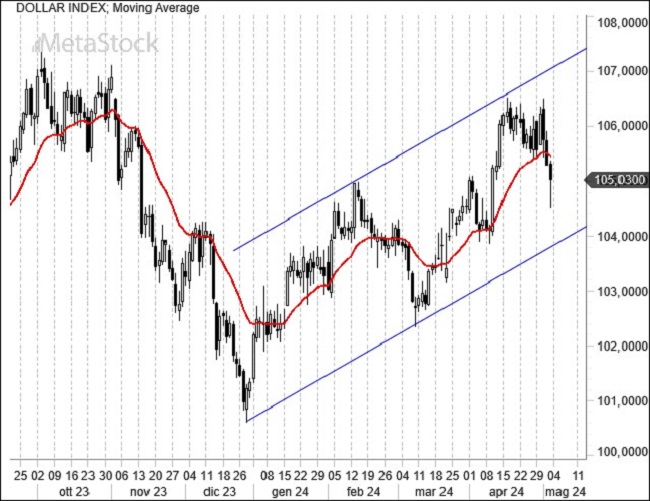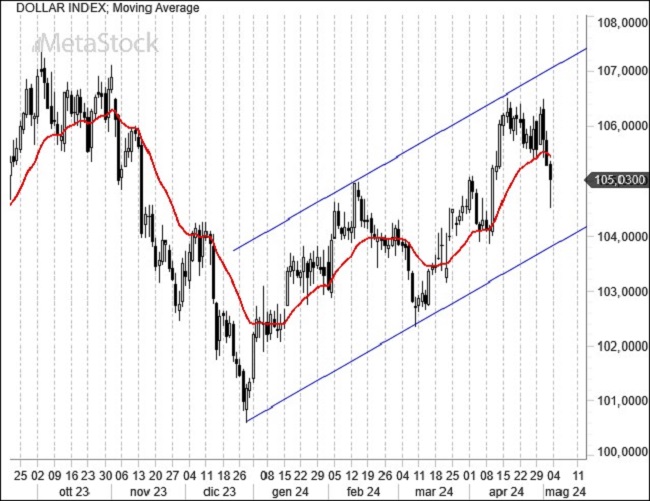- The May FED meeting confirms expectations. A lack of progress in the inflation comeback journey prevents a relaxation on rates, which likely won’t decrease in 2024. Meanwhile, there are some signs of slowdown from unemployment.
- In Europe, macro data, including inflation preliminaries, continue to be scrutinized, potentially giving a green light to the much-anticipated rate cut by markets in June.
- EurUsd remains in the lower end of a trading range. Despite a hawkish stance from the FED on rates, it still fails to break down the support around 1.05. Is the subsequent rebound a sign that perhaps the dollar has run out of steam?
Global Financial Turbulence and Central Bank Strategies
The strong dollar is creating some financial tension globally. Some emerging countries, by lowering the cost of money, contribute to the weakening of their national currencies. In Japan, the rise in yields on American Treasuries is causing a currency hemorrhage on the yen, for now countered by interventions from the Bank of Japan.
Yet, the FED is determined to tame inflation and its expectations. In the latest monetary policy meeting, rates remained unchanged in the range of 5.25% – 5.50%, with the final statement reiterating how the surprisingly positive state of the economy and employment is hindering the achievement of the 2% inflation target within expected timelines. This hints at the need to continue using the tool of rates appropriately to converge inflation towards the expected 2% in the medium term.
This news, naturally, has pushed short-term interest rates on American government bonds above 5% in anticipation of no rate cut in 2024. Naturally, the entire yield curve has risen, providing support to the US dollar, which, however, seems unable to break the euro’s resistance. At the end of the week, however, some data, like the manufacturing ISM, falling below the 50-point mark, and the payroll, issued well below the expected 240,000, have given the market good reasons to return to stocks and bonds in the hope that these initial signs of slowdown will convince the FED to soften the cost of money before winter.
Technical Analysis: Market Uncertainty and Trading Strategies
The FED remains immobile, and the market continues to navigate in uncertainty. It cannot be said that traders currently lack certain sources of profit. Sell when EurUsd reaches the 1.10 area (or above), go long when, conversely, the lower end of the trading range around 1.05 is tested. We have once again approached this technical threshold, which we reiterate, in case of downward breakthrough, would push the exchange rate well below parity. In the absence of themes, going long on EurUsd when the exchange rate approaches these supports is a good idea, and the week’s close has confirmed it. Now, attention is drawn to 1.08, a level beyond which the euro could accelerate.

The graphical analysis of the Dollar Index confirms a bull market which, however, in recent sessions, has suffered a one-two punch first due to the BOJ intervention to defend the yen, and then due to unexciting data from the American labor market, which pushed the euro away from the danger zone. For now, nothing sensational, with a trend that remains bullish for the DXY, but attention to the 104 zone, a breach of which would begin to challenge the bull market of the greenback, incapable of climbing to the highs of 2023. Another sign of weakness?



Leave a Reply
You must be logged in to post a comment.